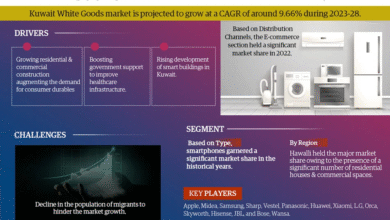
Precision and relevance take the lead in the ever-changing arena of digital advertisement. The strategies that target groups and groups based on demographics and behaviors are beginning to grow old.
A different manner for targeting ads is contextual video advertising, which is about selling ads according to the content being consumed and less with regard to the features of a particular viewer. This contributes to the betterment of user experience and gets better ad performance because it backs the idea of having ads pertaining to the content being watched.
Understanding Contextual Video Advertising
This type of advertising refers to the placement of ads in videos that relate contextually to the product or service being offered. For instance, a manufacturer of cookware would come up with an advertisement to be played inside a recipe tutorial video. This type of advertising owes its existence to the content of the video itself, which serves as the basis for deciding whether the placement is appropriate; thus, such ads are very much in tune with whatever the viewer is interested in or engaged with at the moment.
The greatest benefit of contextual targeting is that it best targets the audience at the precise moment without depending on personal data. That means that it respects the privacy of the user and puts forth relevant advertising-and hence, it is the preferred medium in this data-oriented world.
The Role of Filament in Contextual Targeting
Filament reshapes how brands approach YouTube and Connected TV (CTV) advertising. By combining AI-driven insights with human oversight, the company ensures ads land in the proper context: safe, relevant, and impactful. Here’s how:
1. Smart Use of AI for Content Analysis
Filament leverages advanced AI to understand video content at scale. This isn’t just about keywords; it’s a deep dive into context.
- Topic recognition: Identifies the main subject of each video to match ads with topically aligned content.
- Sentiment detection: Gauges the emotional tone, whether positive, neutral, or negative, to avoid placements that could damage brand perception.
- Engagement signals: Look at how viewers interact with content, helping brands target videos that naturally hold attention.
💡 Benefit: Ads don’t just appear; they fit. Relevance drives higher engagement and ultimately more substantial ROI.
2. Human Oversight for Brand Safety
AI brings scale, but humans bring judgment. Filament blends the two for precision and control.
- Content filtering: Teams ensure ads never appear next to unsafe or controversial material.
- Context review: Analysts confirm that placements make technical and strategic sense.
- Brand guardrails: Advertisers can set strict rules to align campaigns with their values.
💡 Benefit: Brands gain peace of mind knowing their ads live in safe, suitable environments.
3. Customizable Ad Inventory
One size doesn’t fit all, and Filament knows it. The platform lets advertisers shape their own inventory mix.
- Channel-level targeting: Choose creators or publishers that reflect your brand voice.
- Video-level targeting: Drill down into specific videos for hyper-relevant placements.
- Cross-category flexibility: Align with themes, genres, or content types that best resonate with your audience.
💡 Benefit: Advertisers control where and how their ads appear, ensuring placements feel natural to the audience.
4. Driving ROI Through Precision
The combined effect of AI, human expertise, and customizable options delivers measurable business outcomes.
- Higher engagement rates from ads that match the content viewers already care about.
- Reduced wasted impressions by cutting out irrelevant or low-quality placements.
- Improved ROI as campaigns consistently reach the right audience in the proper context.
💡 Benefit: Every dollar spent goes further, turning contextual targeting into a tactic and growth driver.
5. Filament’s Competitive Edge
What sets Filament apart is its ability to merge technology with human intuition. Many platforms rely on AI alone. Filament, however, understands that advertising success also needs human context and brand understanding.
- AI ensures scale and speed.
- Humans ensure nuance and judgment.
- Together, they deliver seamless, safe, and highly relevant campaigns.
Benefits of Contextual Video Advertising
-
Enhanced Relevance
The right message at the right moment makes all the difference. Contextual video advertising aligns your ads with content that already interests the viewer. Instead of fighting for attention, you meet them where their mindset is. The result? More engagement. More clicks. More conversions.
-
Improved Brand Safety
No one wants their ad showing up next to controversial or unsafe content. Contextual targeting lowers that risk. Platforms like Filament give brands full control; blocking categories, filtering content, and protecting reputation. Your ads stay in the right environments, where trust and attention can actually grow.
-
Privacy Compliance
Privacy rules are tightening. Consumers are watching. Contextual advertising avoids the mess altogether, it doesn’t rely on personal data. Instead, it connects messages to content, not to the individual. That means campaigns stay compliant, while brands earn credibility with privacy-conscious audiences.
-
Cost Efficiency
Wasted impressions are wasted dollars. Contextual targeting trims that fat. Ads reach the right viewers faster, with fewer misses, which improves both CPC and CPA. Precision saves money and makes every dollar work harder.
Practical Applications and Trends
Streaming has changed everything. Viewers now pick what they want, when they want it, which makes relevance critical. An eco-friendly brand, for example, running an ad on a sustainability-focused YouTube channel or CTV series will always outperform a random placement. Context matters.
Filament also leans into hybrid campaigns, contextual targeting paired with real performance tracking. Ads aren’t just placed and forgotten. They’re refined in real time. Every adjustment keeps the campaign aligned with business goals.
And with Connected TV and OTT platforms, brands gain a level of control that traditional TV never allowed. Ads can now be aligned with genres, show types, or even individual scenes. That means placements feel native, not forced.
Another trend gaining traction: dynamic contextual targeting. Ads adjust as the video unfolds. Watching a fitness tutorial? Nutrition or workout gear ads appear in sync. Filament’s tech enables these real-time pivots so relevance stays high from start to finish.
Implementing Contextual Targeting
Here’s how to get it right:
-
Define Your Objectives
Are you chasing awareness, leads, or sales? A clear goal shapes every decision.
-
Pick the Right Platforms
Not all platforms offer strong contextual tools. Choose ones that do. Filament’s system, for instance, analyzes content and curates inventory for precision.
-
Curate with Intention
Place ads on videos and channels that reflect your brand’s values and speak to your audience. Alignment here is everything.
-
Measure and Adjust
Watch the numbers; engagement, conversion, cost. Then tweak. Optimization keeps campaigns sharp.
-
Balance AI with Human Oversight
Automation scales the work. Human judgment keeps it smart. Filament combines both for speed and accuracy.
Conclusion
Contextual video advertising is more than just another tactic. It’s the smarter way to place ads: relevant, privacy-safe, and cost-efficient. With platforms like Filament, brands can craft campaigns that adapt to trends, protect reputation, and connect meaningfully with audiences.
This isn’t just about reaching people. It’s about resonating with them. Every impression becomes intentional. Every placement, an opportunity. Done right, contextual advertising turns video campaigns into something greater than adsit makes them part of the viewing experience.




